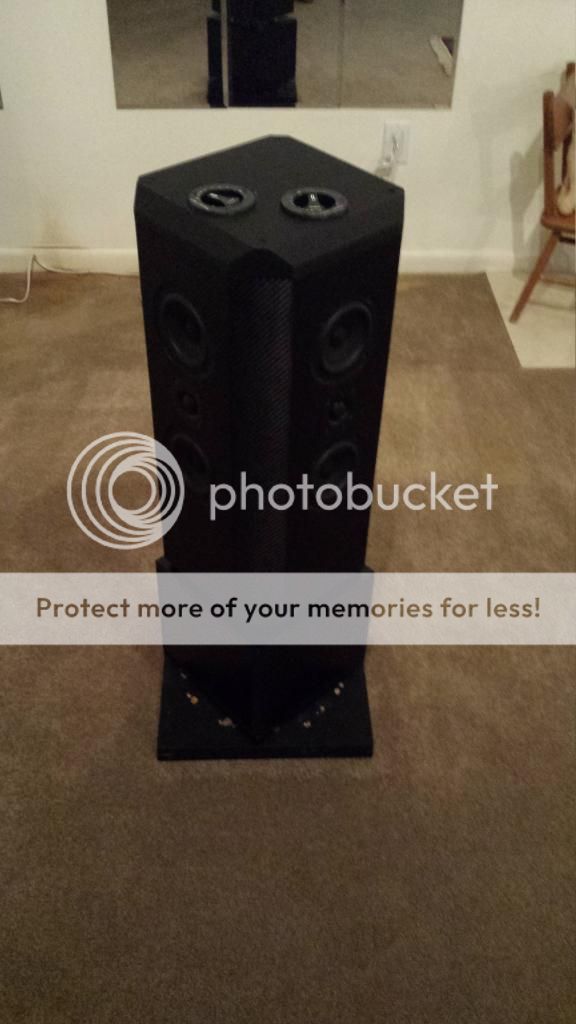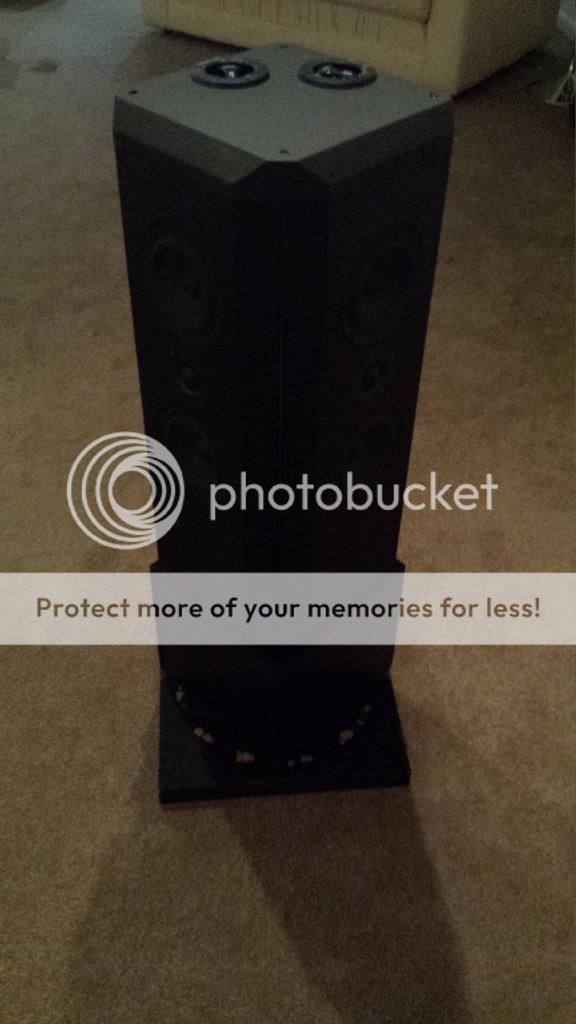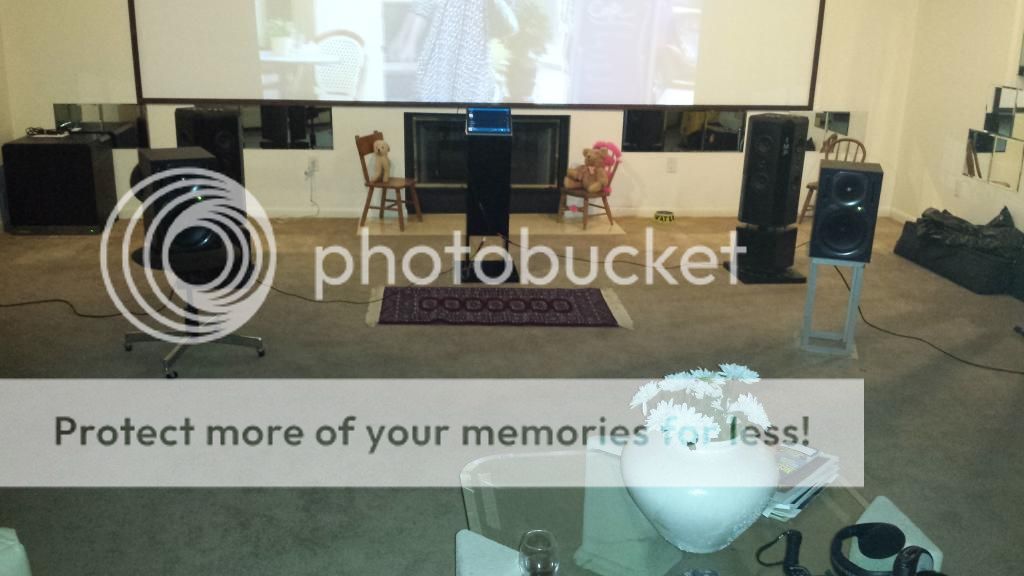Having been part of the study being discussed, let me point out that there really wasn't a "winner". No speaker was statistically any better than any other, they were all basically the same, which, in a very real sense was a big loss to the Orion since it should have come out on top, given its reputation, but it didn't. In terms of measurements, which I did on all three, the Behringer was clearly the best and arguably the best sounding, but the test results were not clear on that outcome.
Due to the law of diminishing returns, a great speaker may be only 10% better than a good speaker.
How are you determining "statistically any better?"
I'm not trying to sound argumentative here; the results of this panel reflect something that I've believed for some time, basically that a lot of speakers sound *different* than other speakers, but not necessarily *better.* This is one of the reasons I stopped chopping up my car to install hi-end speakers. I realized that I was often wrecking my cars to *change* the sound, not necessarily *improve* the sound.
I have a couple of Kef Coaxes sitting here, and they're a good example of this. One of the coaxes is from a $1000 home-theater-in-a-box set. Despite their modest lineage, their imaging is impeccable and their only real shortcoming is that they don't play low.
I upgraded to a larger Kef model, and found that they play much much lower, but they don't image as well as the smaller model.
As usual, no free lunch. Each speaker sounds different, but I'd be hard pressed to say which one sounds "better."
With statistics, I think 😉. It was a tiny sample, so you don't get a "most people prefer" result, which only leaves single-listener results and I don't think the plan was to make those significant? Pretty sure the methodology was discussed in these 300-some pages.Due to the law of diminishing returns, a great speaker may be only 10% better than a good speaker.
How are you determining "statistically any better?"
That's the point of large(r) scale blind tests like Harman has been doing a little of. I don't want to start yet another discussion on THEIR methods either, but their results thus far don't really fit your long-term thinking at all.As usual, no free lunch. Each speaker sounds different, but I'd be hard pressed to say which one sounds "better."
Last edited:
The originals.

Left side....mirrors, sound absorbing columns.

Right side.....lotsa mirrors and sound absorbing columns.

There they are 🙂

Bose as rear surrounds.

Front.

Back.

Gary is serving very ironic wine. 😀

The showdown!

Intensely listening to the behringers.

Enough remotes Gary?

My girlfriend needed plenty of wine to deal with all the jazz 😛


Left side....mirrors, sound absorbing columns.

Right side.....lotsa mirrors and sound absorbing columns.

There they are 🙂

Bose as rear surrounds.

Front.

Back.

Gary is serving very ironic wine. 😀

The showdown!

Intensely listening to the behringers.

Enough remotes Gary?

My girlfriend needed plenty of wine to deal with all the jazz 😛

Though the Behringer might be better then Orion, it's still a speaker with huge compromises.So we should all get a $400 pair of B2031A's and put away our DIY stuff? 🙂
I would say there's more then a slight audible difference between my Behringer and K-402 horn with JBL 2226 below. But who knows, perhaps I want the more expensive speaker system to sound better to justify my money. So in reality it's only placebo and bias kicking in. 😀
That's a very nice room Melo theory! I wish I had something like that.
Attachments
With statistics, I think 😉. It was a tiny sample, so you don't get a "most people prefer" result, which only leaves single-listener results and I don't think the plan was to make those significant? Pretty sure the methodology was discussed in these 300-some pages.
That's the point of large(r) scale blind tests like Harman has been doing a little of. I don't want to start yet another discussion on THEIR methods either, but their results thus far don't really fit your long-term thinking at all.
Yes, the methodology did come up before.
To me the biggest problem with the test was the methodology . It was not such that a good conclusion should have been expected. The test was setup strictly to show if there was a difference in the presentation of these speakers as a "plausible representation of an acoustic space". The answer was "Yea, they all worked OK."
I was asked to participate and I asked about the methodology. After I heard what it was, I declined. Basically the entire study was focused on "spaciousness" and if spaciousness is not a major part of ones judgment then no conclusion should have been expected. Nothing related to "image", either real or created, was part of the test. That's not a complete test IMO and not particularly a strong motivation in my design approach. I look for good spaciousness, mostly in the room design, but good image is paramount to me in a loudspeaker because rooms can only degrade it. When this aspect is missing from the test, how good can we expect the results to be valid for everyone?
As a humorous side line, the author of this test recently commented to me that car stereos proved to him that room acoustics was basically all the same because cars sounded just as good as a home system and they had very poor acoustics. Clearly he and I are on different pages when it comes to audio reproduction. I have never heard a car that can compare to a well setup home system - and I have heard a lot!!
PS. more to Omholts comments: dynamics was never a consideration in the test as well. It was all concert venue music.
Ha, he should round out that collection:
An externally hosted image should be here but it was not working when we last tested it.

Yes, the methodology did come up before.
To me the biggest problem with the test was the methodology . It was not such that a good conclusion should have been expected. The test was setup strictly to show if there was a difference in the presentation of these speakers as a "plausible representation of an acoustic space". The answer was "Yea, they all worked OK."
I was asked to participate and I asked about the methodology. After I heard what it was, I declined. Basically the entire study was focused on "spaciousness" and if spaciousness is not a major part of ones judgment then no conclusion should have been expected. Nothing related to "image", either real or created, was part of the test. That's not a complete test IMO and not particularly a strong motivation in my design approach. I look for good spaciousness, mostly in the room design, but good image is paramount to me in a loudspeaker because rooms can only degrade it. When this aspect is missing from the test, how good can we expect the results to be valid for everyone?
As a humorous side line, the author of this test recently commented to me that car stereos proved to him that room acoustics was basically all the same because cars sounded just as good as a home system and they had very poor acoustics. Clearly he and I are on different pages when it comes to audio reproduction. I have never heard a car that can compare to a well setup home system - and I have heard a lot!!
PS. more to Omholts comments: dynamics was never a consideration in the test as well. It was all concert venue music.
Gary Summer's BMW and Jon Whitledge's Sprinter Van sounds significantly better than 95% of the home stereos I've heard.
Imaging isn't a huge deal to me, I'm a big fan of articulation and dynamics. (IMHO, most of the music that I listen to doesn't HAVE any imaging.)
But if imaging WAS important to me, I would set up my room at home the way that Jon and Gary set up their cars. Basically the sound is completely optimized for a single point in space, but if you're head is in that spot the imaging is astounding.
Ha, he should round out that collection:
An externally hosted image should be here but it was not working when we last tested it.
Lol!
Sadly,the Behringers are better than most of the two-way DIY efforts I've heard.So we should all get a $400 pair of B2031A's and put away our DIY stuff? 🙂
LOL!As a humorous side line, the author of this test recently commented to me that car stereos proved to him that room acoustics was basically all the same because cars sounded just as good as a home system and they had very poor acoustics. Clearly he and I are on different pages when it comes to audio reproduction. I have never heard a car that can compare to a well setup home system - and I have heard a lot!!
Most people, including audiophiles, have never heard a well treated room. They have no clue what they are missing.
Sadly,the Behringers are better than most of the two-way DIY efforts I've heard.
The Behringers use reasonably nice drive units, implement them well, and have been measured and re-measured (in a big anechoic chamber) until the boxes are performing the best they can.
Zaph's measurements of the passive version shows a lot about the design. The waveguide, for example, adds a few dB towards the bottom end of the tweeter's passband, so the 1st order crossover can be moved a bit higher. The acoustic crossover is around 2.5kHz IIRC, but the rolloff starts higher up, so the tweeter isn't taking so much power.
Sure, some people throw a lot of money at drive units, but its difficult to compete with that sort of R&D.
Chris
Well, you have a point with the D (development)The Behringers use reasonably nice drive units, implement them well, and have been measured and re-measured (in a big anechoic chamber) until the boxes are performing the best they can.
Zaph's measurements of the passive version shows a lot about the design. The waveguide, for example, adds a few dB towards the bottom end of the tweeter's passband, so the 1st order crossover can be moved a bit higher. The acoustic crossover is around 2.5kHz IIRC, but the rolloff starts higher up, so the tweeter isn't taking so much power.
Sure, some people throw a lot of money at drive units, but its difficult to compete with that sort of R&D.
Chris
although I'd have to argue with the R (research)
this speaker design has been around for a long time.
We as designers aren't just building proven designs.
We are usually inventing new ideas and prototypes.
This being said. I've designed speakers that whip the behringers *** like the bully in the schol yard. 🙂
Sure, some people throw a lot of money at drive units, but its difficult to compete with that sort of R&D.
Chris
Seriously Chris, this is the bottom line to me.
I built my first speakers some 45-50 years ago, and built several more systems over the next 10-20 years. Then I stopped. Why? because I simply could not compete with the resources available to the large producers. Then about 10-15 years ago computers put the same level of resources into my hands (FFT analyzers, computer models, etc.) and I have taken things even further than what is commercially available, even though some serious capability is commercially available. Much of it free.
But there is just no way that a low budget DIY approach can compete with a company like Behringer who are out to be the highest value provider in the business. (I know Uli Behringer personally and that is his goal.)
This being said. I've designed speakers that whip the behringers *** like the bully in the schol yard. 🙂
Could we see some data to back up that claim?
I couldn't match them at that price point. Now if twice that or more possibly, as long as your not looking for a profit. These little gems are on very solid ground.
Uli should be proud 🙂
Uli should be proud 🙂
Xrk, I think it's the right time to build some foam-core IMP speakers. How about starting with eight 6.5" midbasses with eight 3" fullrangers per speaker; FAST configuration (1st order series crossovers at about 400 hz). Sealed boxes. Active amplification (four independently adjustable amps-one for each side of the speaker). In case they don't go deep enough, add four (or at least two) sealed subs with linkwitz transform circuit. Should sound good 🙂
Could we see some data to back up that claim?
Go to my profile page and look at the designs and measurements.
The ones I'm particularly referring to is my desktop dipoles.
Which oddly resemble SL's new concept as far as the top FR driver goes.
Then look at the date of the thread and copmare it to SL's lx mini.
They trump the behringers as far as CD and non-interaction with the room.
And not just horizontal CD, but also vertical due to the low xover point.
(something that can never be acomplished with horms or waveguides (unless its a unity horn)
and don't even mention coaxials such as the Eminence or genelic because its a moving waveguide.
- Home
- Loudspeakers
- Multi-Way
- Linkwitz Orions beaten by Behringer.... what!!?
